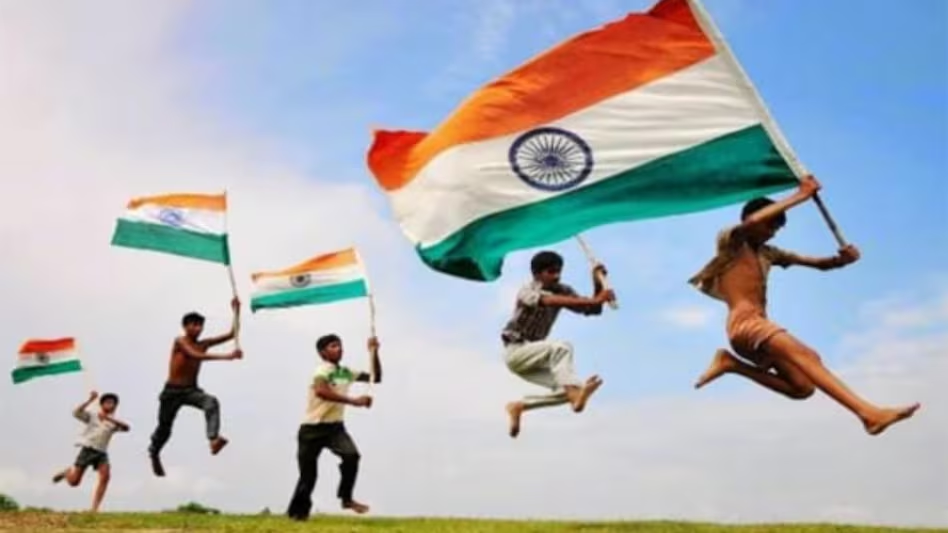India’s “Har Ghar Tiranga” campaign, an initiative of the central government, has become a prominent feature of the Independence Day celebrations. Launched as part of the larger “Azadi Ka Amrit Mahotsav” initiative, the campaign encourages citizens to hoist the Indian national flag, the Tiranga, at their homes to commemorate the country’s 75th Independence Day. This campaign symbolizes national unity, instills a sense of patriotism, and encourages the widespread adoption of the national flag.
Background and Objectives
The “Har Ghar Tiranga” campaign was introduced in 2022 by Prime Minister Narendra Modi to celebrate the 75th anniversary of India’s independence. The idea behind the campaign is rooted in the notion of bringing the flag, a symbol of the nation’s pride, closer to the people. Traditionally, the national flag was hoisted at public and government buildings on national holidays. However, this campaign aims to make the flag a household symbol of national pride.
The campaign’s objectives include:
- Strengthening National Unity: By encouraging citizens across the country to display the flag, the campaign aims to reinforce the sense of unity and collective pride in being Indian.
- Increasing Awareness: The campaign also serves to educate people about the history and significance of the Indian flag, promoting respect and reverence for it.
- Patriotic Fervor: The initiative is designed to inspire a deep sense of patriotism, with citizens actively participating in the country’s Independence Day celebrations.
Scale and Participation
The campaign saw an overwhelming response in its inaugural year in 2022. According to official reports, over 200 million flags were hoisted across the country. In 2023, this number increased significantly, with the government estimating that approximately 300 million flags were displayed as part of the campaign.
Government Initiatives and Support
To facilitate the widespread adoption of the campaign, the Indian government took several steps:
- Ease of Flag Procurement: The government ensured that the flags were easily available to the public. Partnerships were established with various e-commerce platforms, including Amazon and Flipkart, to make the flags accessible online. Additionally, local vendors were encouraged to stock flags, ensuring that even in remote areas, citizens could easily purchase a flag.
- Awareness Campaigns: The government conducted extensive awareness campaigns through various media, including television, radio, and social media, to inform people about the significance of the campaign and how they could participate.
- School and College Participation: Educational institutions were actively involved, with schools and colleges organizing events where students and staff could collectively hoist the flag. This not only ensured widespread participation but also educated the younger generation about the importance of the national flag.
Challenges and Criticism
Despite the campaign’s success, it was not without its challenges:
- Environmental Concerns: The large-scale production and distribution of flags, especially those made of non-biodegradable materials like plastic, raised environmental concerns. Critics pointed out the potential environmental impact of such a massive campaign, especially if the flags were not disposed of properly after the event.
- Affordability and Accessibility: While the government made efforts to ensure flags were affordable and accessible, there were still concerns in some regions, particularly rural areas, where people found it difficult to procure the flags due to either cost or unavailability.
- Political Overtones: Some critics viewed the campaign as a political move, aimed at garnering support for the ruling government. However, the government maintained that the campaign was purely about national pride and had no political motives.
Impact and Legacy
The “Har Ghar Tiranga” campaign has had a significant impact on the Indian populace:
- Increased Patriotism: The campaign has undeniably succeeded in instilling a renewed sense of patriotism among the masses. The sight of the national flag fluttering from every home during Independence Day has become a powerful symbol of national unity.
- Cultural Integration: The campaign has also played a role in integrating diverse communities across India. By participating in this collective national exercise, citizens from different backgrounds have found common ground in their shared identity as Indians.
- Global Recognition: The campaign has caught the attention of the global community, with many praising the initiative as a unique way to celebrate national pride. The widespread participation has showcased India’s unity and strength on a global platform.
Conclusion
The “Har Ghar Tiranga” campaign has emerged as a landmark initiative in India’s celebration of Independence Day. While it has its challenges, the campaign has successfully brought the national flag into the lives of millions of Indians, fostering a sense of unity, patriotism, and national pride. As the campaign continues in subsequent years, it is likely to become an enduring tradition, reinforcing the collective identity of the Indian people.





